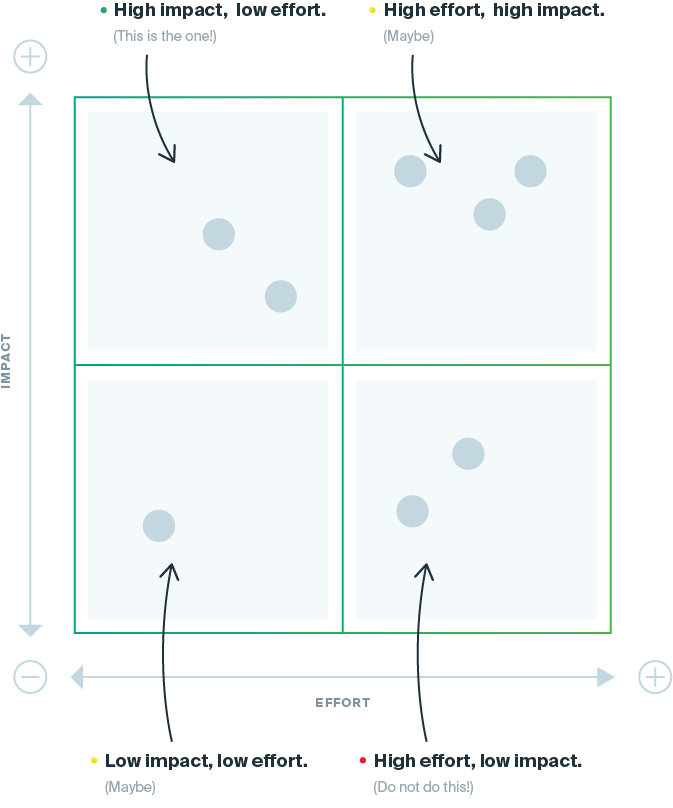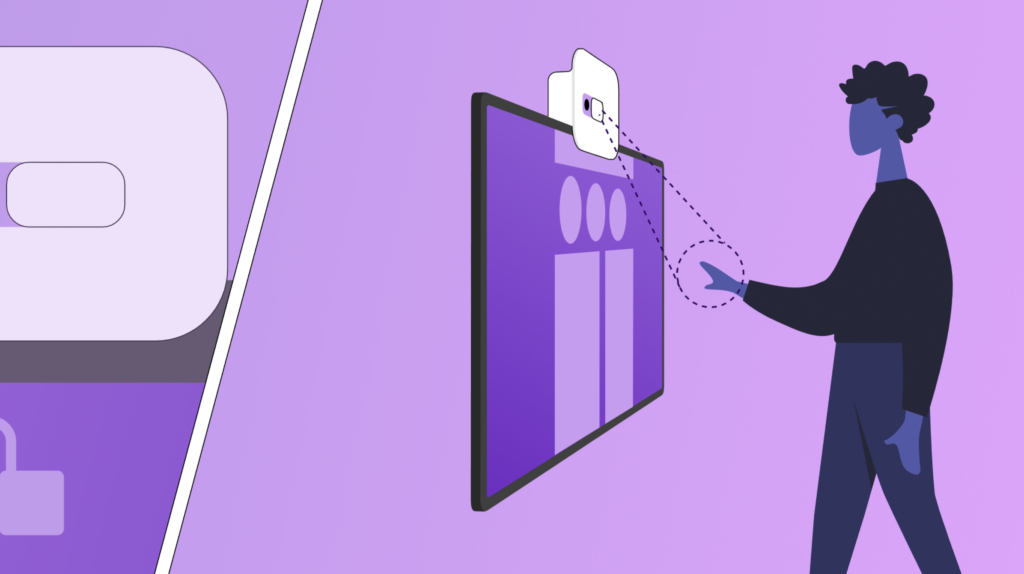Article
The 6 Phases of Innovation Workshops
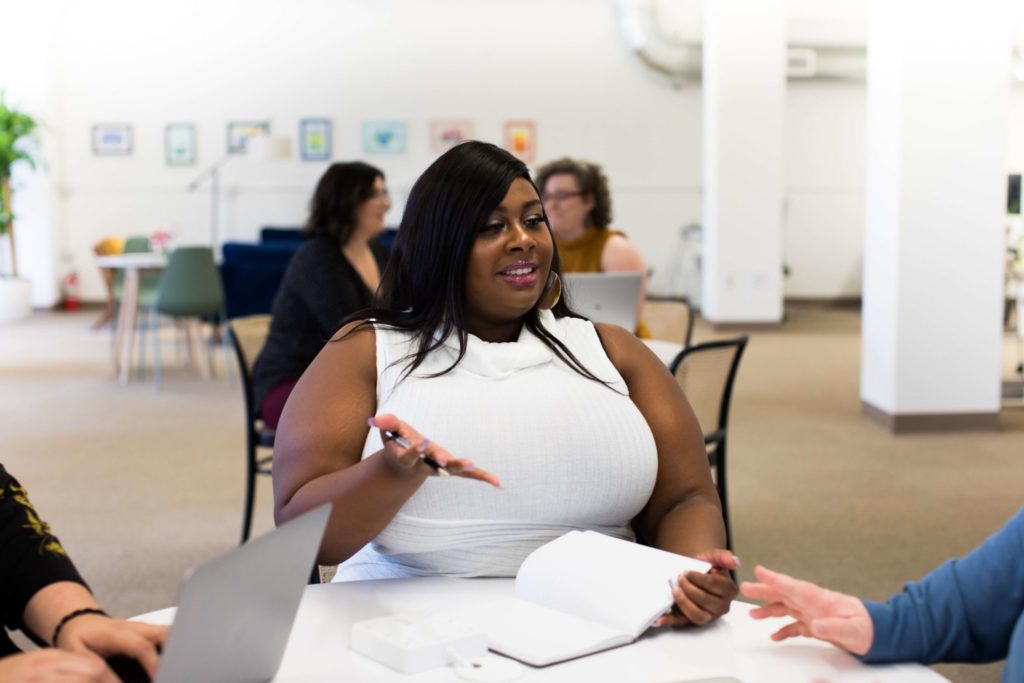
As remote work becomes increasingly normalized, effective team collaboration is now more critical than ever. Putting in a little effort to facilitate group workshop exercises can help teams build clarity, momentum, and enthusiasm around a particular challenge. By stretching their thinking, teams can become more effective at identifying problems, establishing vision, generating solutions, and executing strategies.
Sometimes the solution to a complex challenge appears serendipitously when unexpected connections are made during atypical circumstances. Workshops can unlock valuable insights by creating optimal conditions for new mental, social, and visual connections to be made.
Here are principles to center your team around the core steps of innovation and collaboration in a workshop setting: alignment, understanding, exploration, boundaries, and direction.
Step 1: Create alignment
Framing a challenge correctly is critical to generating the right solutions. Alignment focuses a team on the goals and problems at hand. This means identifying the right problem to tackle, gathering input from multiple stakeholders, or breaking down the parts of a larger problem. As Thomas Wedell-Wedellsborg wrote in his Harvard Business Review article: “In surveys of 106 C-suite executives who represented 91 private and public-sector companies in 17 countries, I found that a full 85% strongly agreed or agreed that their organizations were bad at problem diagnosis, and 87% strongly agreed or agreed that this flaw carried significant costs.” Identifying and aligning around problems requires organizing a team, gathering information, and creating agreement on prioritization.
Recommended alignment workshop activity: Memory Moves
Memory Moves is a fun activity for smaller groups to get everyone involved and raise the energy. It prepares the group for fun and active participation in workshop activities.
- Each person makes up a simple move to a central beat. It should be done in a couple of seconds and be visible on camera (if remote).
- Everyone does their move and introduces themselves. Watch and remember everybody’s move.
- The facilitator starts by doing their own move and then passing someone else’s move, without saying their name.
- That person must catch their own move by doing it and then pass it to someone else, by doing the move of the person they are passing to next.
- If you delay in catching your move, or can’t remember somebody else’s move to pass it to, then you’re out! Go through until everyone’s had a chance to make a move
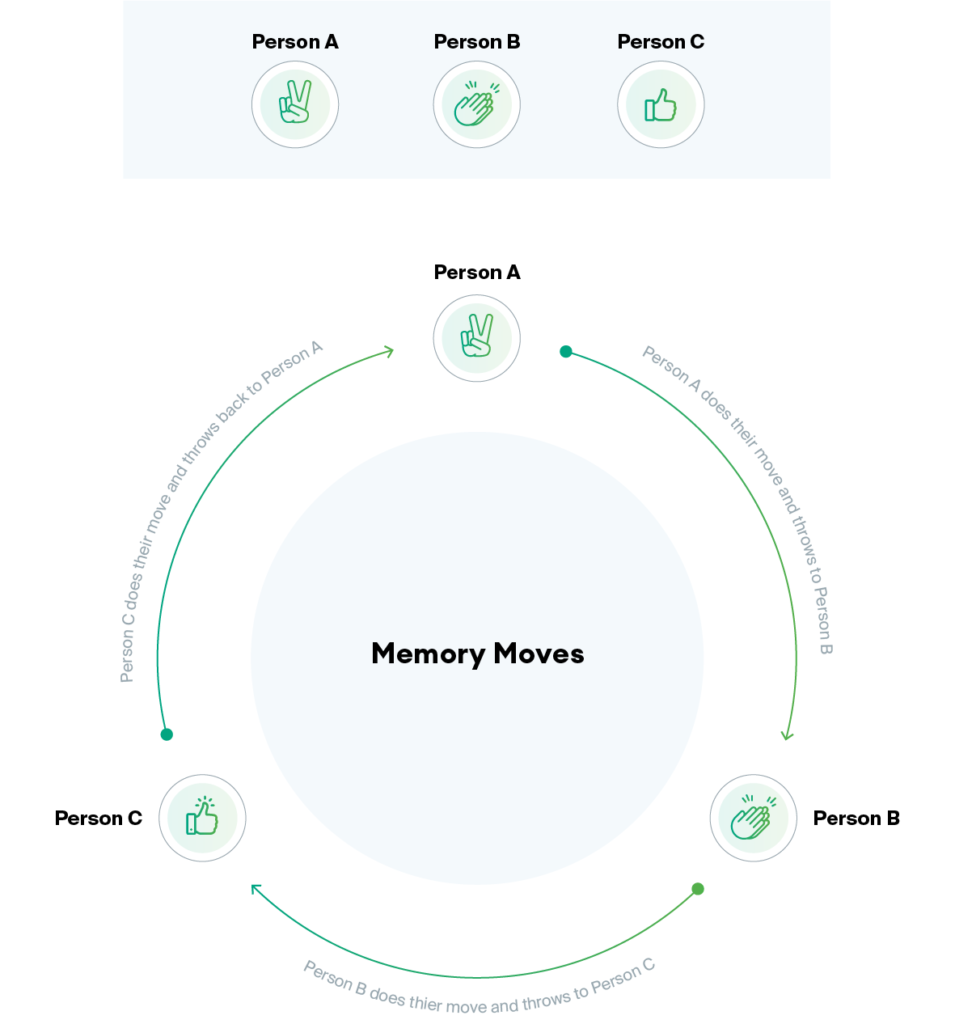
Step 2: Frame problems
A continuation of creating alignment, framing problems focuses on identifying the right problem to solve, gathering input from multiple stakeholders, then breaking down the parts of a larger problem. Consider the four principles below:
- Rephrasing and focusing: Think of new ways to phrase your problem and adjust your focus to better align.
- Challenging assumptions: Question your group’s assumptions and validate them throughout the conversation.
- Visualizing the problem: Draw a picture, diagram, or map to help align multiple perspectives.
- Framing questions, not statements: Questions open up communication, whereas statements can close it down.
Recommended alignment workshop activity: Partnership Canvas
The Partnership Canvas creates a visual framework for a team to analyze the concurrent needs among different organizations that make up a value-creation system. It helps reframe problems into potential opportunities to create connections.
- Describe the aim or goal of the partnership for your business.
- Identify the desired assets in their respective partner’s business model.
- Teams sketch out a partnership canvas from their own team’s perspective using sticky notes to define each building block.
- Bring teams to the negotiating table and present. Check for fit and common understanding.
- Create agreement on the created value for each partner and define the next steps.
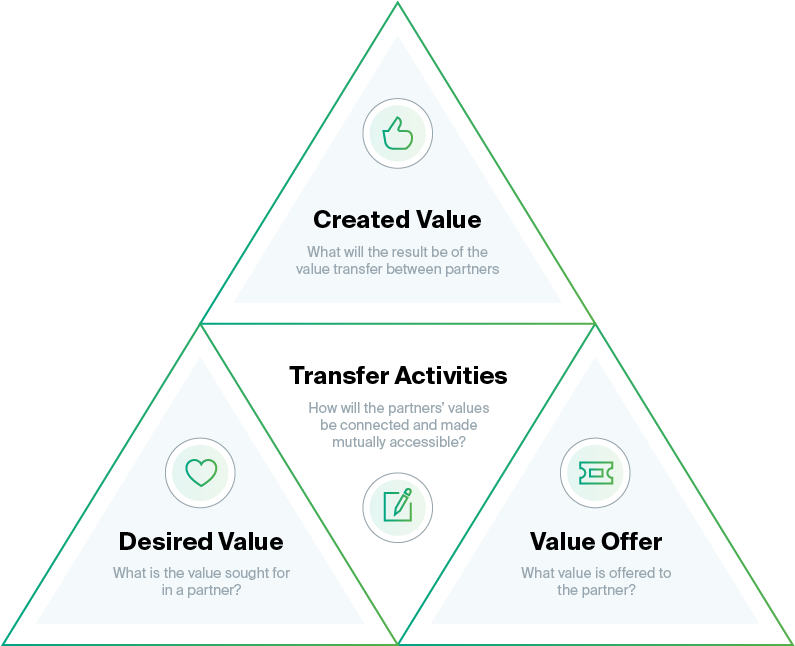
Step 3: Develop understanding
On top of aligning around a problem, often groups need new perspectives to better understand the opportunity or problem at hand. Incorporating empathy into problem-solving enables more robust and validated direction. Workshop methods focused on developing a common understanding can be used toward a variety of outcomes. First off, they’re commonly used to gain insight into the behaviors of target users, either in their daily life or about a product. Understanding activities are also extremely well suited to getting feedback or observing critiques from customers or stakeholders. Finally, focusing on empathy can help a team understand the potential uses for a product from other perspectives.
Understanding principles
- Interacting with actual customers: Bringing in the consumer’s voice can provide perspective and insight that can redefine a product. Seeing the way users interact and the comments they have can provide much-needed clarity on how to improve a product or reach a target.
- Observing and recording: Record more than what interviewees say. Looking at their body language, emotions, or even tone can greatly impact the interpretation of their comments.
- Interpreting the deeper meanings: Try to build a narrative out of an interview. Why are they saying the things they say? What matters to them? How does this product interact with their life and goals?
Recommended understanding workshop activity: Empathy Maps
Empathy maps are a way to visually inventory all the aspects of a particular user’s perspective on a problem, experience, product, or service. They help build common understanding and help put you in “someone else’s shoes.
- Print or draw out an empathy map canvas before a user interview.
- During the user interview, make note of everything the user says or does.
- Also make note of what the user might be thinking that motivates the things they are saying, and how they feel about the different things they discuss.
- After the interview, organize all of the notes the group took onto one large empathy map.
- Group notes in each category and discuss to distill insights.
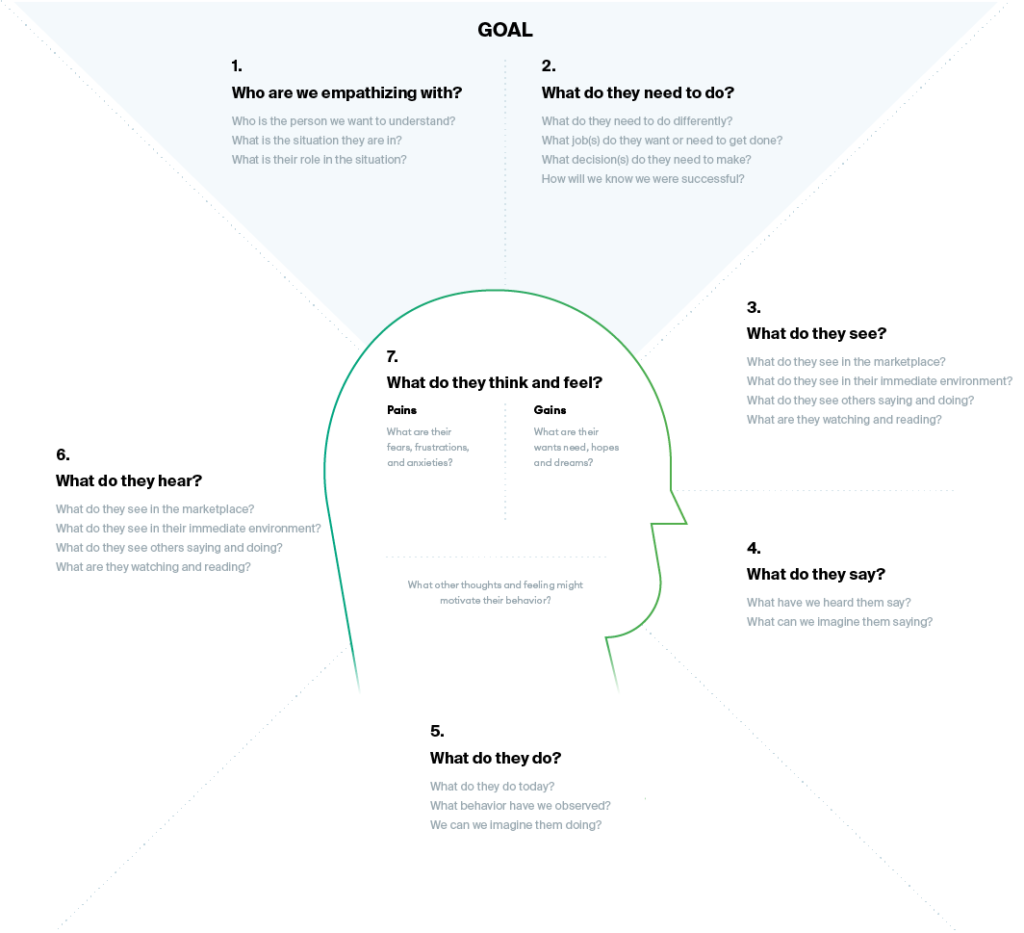
Step 4: Open Exploration
Exploration is the divergent phase of a workshop. This is the point at which a problem has been identified, the team is aligned, and the next goal is generating possible solutions. Strong methods for ideation and collaboration provide the best foundation for developing robust solutions. While most exploration activities are used to generate lots of ideas, they also can be used to collaborate on new ideas or explore potential spaces and opportunities. These methods are also well suited to challenging assumptions and stretching thinking.
Exploration principles:
- Managing time effectively: Constraints help creativity thrive, so put time limits on ideation exercises to draw out as many ideas as possible and move towards group collaboration quicker.
- Ideating alone first: Group brainstorming is highly effective, however, it can oftentimes be tunnel-visioned. Coming to a session with a set of ideas created as pre-work, or working alone before joining forces can provide the group more fodder to develop the best solutions.
- Deferring judgment: Some of the best insights come from ideas that could initially be rejected. Understanding different aspects of any idea can help with ultimately understanding what makes a good idea. Encouraging individuals to share all their ideas, including the ones they view as “bad” helps the group reach success.
- Encouraging wild ideas: Break the mold to develop something new. What might seem impossible can inspire real change.
Recommended exploration workshop activity: Crazy 8s
Crazy 8s is a fun and fast way to generate a lot of ideas quickly, reserving judgment and using visuals to spur new thinking.
- Task each participant to fold their piece of paper into 8 sections, then unfold to see all of the boxes.
- Set the timer for 8 minutes.
- Participants should sketch one idea in each rectangle, trying to fill in all 8 sections in the time allotted.
- When the timer goes off, all pens are down.
- Each participant should choose their top ideas from the 8 ideas and summarize the sketch into a single statement or a “one line creative concept.
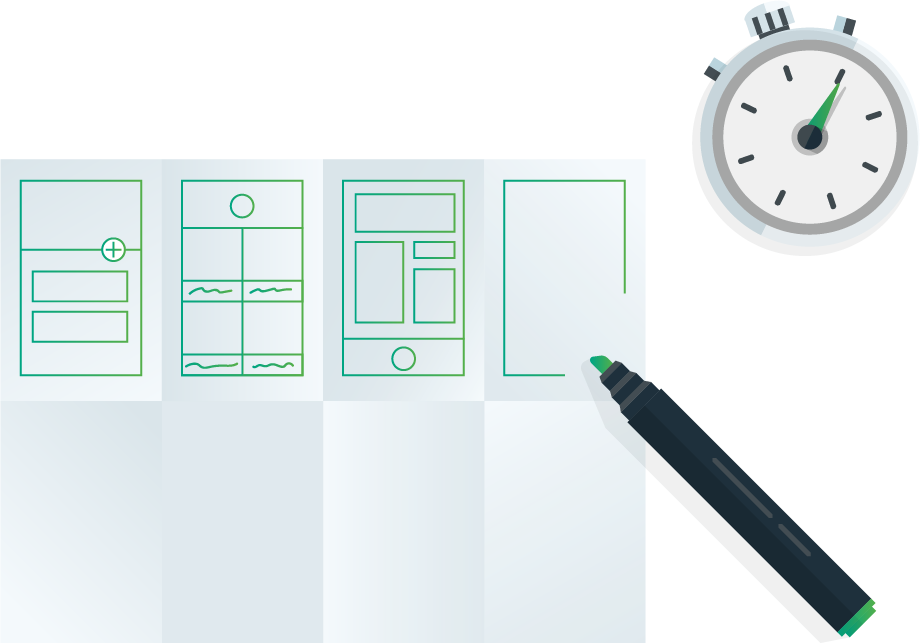
Step 5: Establish Boundaries
While wild ideas are great, it is important solutions can be grounded in the goals and capabilities of the organization. Boundary activities on the whole have three main applications. First is understanding the requirements for a project. This includes identifying the constraints, goals, or KPIs that need to be achieved. Second, boundary activities can be used for defining milestones and setting expectations. Finally, boundary methods can be used to clarify roles and responsibilities, and assign tasks.
Boundary principles
- Checking in to acknowledge accountabilities: Make sure everyone in the workshop knows what they’re responsible for by simply checking in. Getting confirmation from everyone involved helps drive individual ownership.
- Asking clarifying questions: Engage the team by asking clarifying questions to make sure that there is a common understanding about the right constraints.
- Using constraints to provide focus: Define important considerations and constraints to evaluate solutions against to help converge on the right solutions.
Recommended boundaries workshop activity: WhoDo
WhoDo is a quick and easy way to engage team members at the end of a workshop to align on roles and responsibilities for the next steps by creating a simple chart that helps drive clarity
- Start with the vision. Write out/visualize the goal.
- Draw a two-column matrix and write “WHO” on the left and “DO” on the right.
- Ask: Who is involved in making this happen? Who is the decision-maker? Who has needed resources? Who may be an obstacle? Whose support is needed? Write down all these “Whos” on the left side.
- For each WHO, ask: “What do they need to do, or do differently? What actions will build toward the big goal?
- Prioritize the WHO-DO pairs and identify which ones are the most important to your cause.
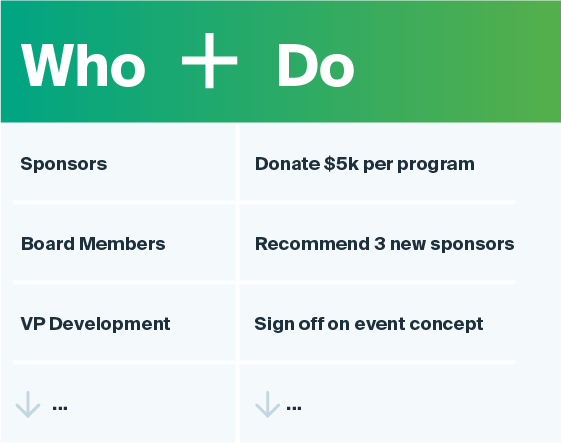
Step 6: Make a plan
Finally, we have direction. These activities are focused on creating actionable momentum to take the previous work forward. This can include activities for discussing or selecting the best solutions, to activities that help build a game plan and assign responsibilities to individuals. One reason direction activities are vital is due to the difficulty that comes with decision-making, especially when there are many options to choose from. By providing small groups the ability to develop and communicate mission statements, these activities motivate action and clarify work for the team.
Planning principles
- Referring to your North Star: Understanding the group’s high-level goals, and always referencing back to them when making decisions about moving forward keeps product vision aligned.
- Breaking problems into parts: Large problems can be overwhelming, so breaking them down into parts lets the group tackle them piece by piece. This increases efficiency and clarifies tasks and timelines.
- Broaden, then narrow: Don’t focus on a specific direction immediately, but rather maintain a broad focus on the goal. After potentials have been identified, focus in to pick a specific direction, and clarify all the details around that decision.
Recommended planning activity: Impact vs. Effort Matrix
An impact vs. effort matrix allows teams to prioritize which ideas to pursue and which ones will work best in the future. After completing other steps of the workshop process, consider finalizing your output in a matrix, setting the stage for implementation.
- Draw a 2×2 canvas and label the axis with effort and impact.
- List out ideas from the previous ideation exercises on sticky notes.
- Plot each idea on the matrix based on the effort to complete and the impact the idea might have.
- Focus on the ideas in the top left corner: these are the easy wins. Avoid the ideas in the lower right corner: these are the difficult ones with little impact. Consider the ideas in the lower left and upper right corners, as they may be worth the effort.
